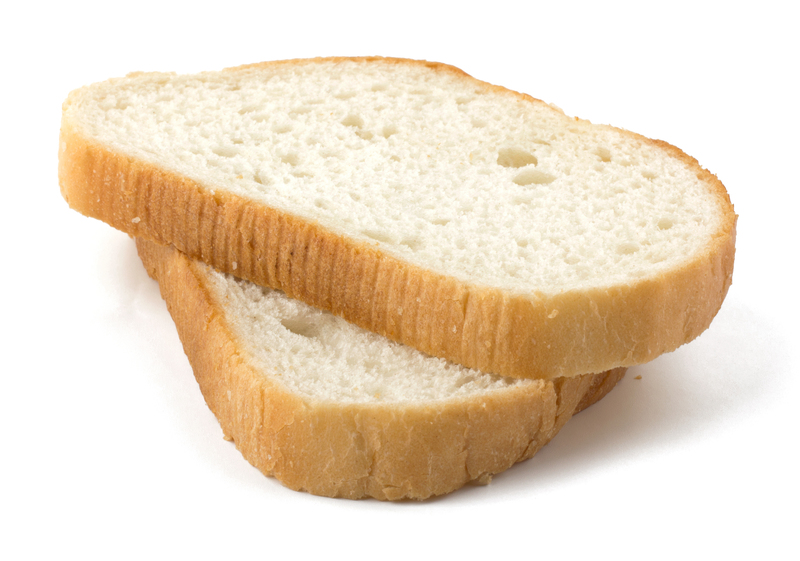Expert Advice: Designing a Mold-Free Bathroom Experience
Posted on 14/08/2025
Expert Advice: Designing a Mold-Free Bathroom Experience
Discover comprehensive, practical, and science-backed tips to ensure your bathroom remains a sanctuary of cleanliness and health. Explore expert strategies and design secrets for creating a truly mold-free bathroom, and learn which materials, appliances, and habits can make all the difference!

Why Mold Loves Bathrooms: Understanding the Enemy
Bathrooms are naturally humid spaces, making them prime real estate for mold spores eager to settle and multiply. Mold growth in bathrooms isn't just unsightly--it's a serious health risk. Mold can trigger allergies, respiratory issues, and even structural damage if left unchecked. Designing a mold-proof bathroom is as much about prevention as it is about aesthetics. But what makes bathrooms so vulnerable?
- High levels of humidity from showers, baths, and sinks
- Poor ventilation trapping moist air
- Inadequate waterproofing and sealing
- Frequent water splashes and spills
With the right expert guidance and attention to detail, you can counteract these risks and design a stunning, safe, mold-free bathroom experience for years to come.
Building Blocks for a Mold-Resistant Bathroom Design
1. Optimize Bathroom Ventilation
Good airflow is your bathroom's greatest defense against mold. The best bathroom ventilation systems remove moisture before it settles on surfaces or penetrates walls.
- Install a high-quality exhaust fan--rated to handle your bathroom's square footage.
- Keep the fan running for at least 20 minutes after bathing or showering.
- If possible, add a window you can open for cross-ventilation.
- Consider models with humidity sensors for automated moisture control.
Pro Tip: Make sure all bathroom fans vent directly outside, not just into attics or ceiling cavities, or you risk simply moving the moisture problem elsewhere!
2. Choose Mold-Resistant Materials
Your design choices matter from floor to ceiling. Selecting the right mold-resistant materials for bathrooms can make your space less hospitable to spores:
- Ceramic or porcelain tiles for floors and walls are naturally moisture-proof and easy to clean.
- Mold-resistant drywall (often labeled as "green board" or "purple board") helps prevent mold from taking root in wall cavities and ceilings.
- Choose waterproof grout and seal it regularly to reduce water absorption.
- Solid surface countertops like quartz or non-porous stone don't provide crevices for moisture or germs.
- Consider anti-mold paint or specialty sealants for an extra layer of defense.
3. Smart Plumbing Choices: Leak-Proofing Your Bathroom
A single undetected leak can undermine your entire mold-free bathroom design. Here's how to safeguard your space:
- Install quality plumbing fixtures and regularly inspect visible pipes and joints for drips.
- Use flexible, mold-resistant caulk around tubs, showers, and sinks--and reapply as needed, since caulk can deteriorate over time.
- Opt for wall-mounted faucets to minimize hard-to-clean areas where water can collect around the base.
- If possible, build in leak detectors or moisture sensors for real-time alerts.
4. Design for Drainage
Expert advice always highlights the importance of water management. Effective drainage systems can dramatically reduce the risk of standing water, which is a breeding ground for mold.
- Ensure floors slope slightly toward drains in showers and wet rooms.
- Use linear drains for modern aesthetics and enhanced water removal.
- Maintain clear, debris-free drains at all times, with regular cleaning and occasional enzyme treatments if needed.
5. Eliminate Clutter & Plan Smart Storage
Limited storage can lead to bottles, sponges, and loofahs piling up in damp corners, creating ideal spots for mold growth. Consider these clutter-reducing design ideas:
- Install wall niches or recessed shelves in showers to keep items elevated and allow air circulation.
- Opt for easy-to-clean glass or plastic shelving rather than wood, which can warp and retain moisture.
- Design closed cabinetry with adequate airflow--vented doors or open shelves help prevent trapped humidity.
Daily Habits: Preventing Mold in a Well-Designed Bathroom
1. Wipe Surfaces Regularly
Get into the habit of wiping down tiles, glass doors, and counters after use. Even simple actions like squeegeeing the shower walls can significantly reduce lingering moisture.
2. Keep Fabrics Dry
Wet towels, bath mats, and shower curtains are prime mold habitats. Launder these items frequently and hang them to dry with plenty of space between them. Choose mold-resistant shower curtains when possible.
3. Use Dehumidifiers or Moisture Absorbers
If your climate is very humid, consider a small dehumidifier designed for bathrooms, or moisture-absorbing crystals placed strategically in cabinets or shelves. Reducing the overall room humidity below 50% is optimal for mold prevention.
4. Inspect Seals and Caulking
Caulk around tubs and sinks can deteriorate over time, allowing water to sneak behind surfaces without being seen. Schedule periodic checks and touch-ups, using bathroom-specific, mold-resistant products for repairs.
Renovating or Remodeling? Level Up Your Bathroom's Mold Resistance
If you're planning a bathroom remodel, now's your chance for a true mold-free bathroom transformation. Take advantage of the construction phase to implement advanced strategies and long-term solutions:
1. Invest in Waterproof Membranes
Install a high-quality, waterproof membrane behind all wet area tiles. These specialty products form a physical barrier between the surface and your home's structure, providing "insurance" against future leaks and hidden dampness.
2. Radiant Floor Heating
Heated floors may seem like a luxury, but they're also practical. By speeding up drying times after each shower, radiant heating directly combats mold growth in grout lines and underfoot.
3. Frameless Glass Showers
These popular designs have fewer joints and crevices compared to framed models, meaning less surface area for mold to settle. Pair them with squeegees for an ultra-hygienic, easy-to-maintain enclosure.
4. Low-VOC, Mold-Inhibiting Paints
When painting bathroom walls or ceilings, select low-VOC paints with added mold inhibitors. They resist moisture infiltration without introducing harsh chemicals into your home's indoor air quality.
Eco-Friendly Approaches to a Mold-Free Bathroom Experience
A healthy bathroom doesn't have to come at the environment's expense. Embrace eco-friendly products and techniques for a cleaner, greener, and mold-resistant bathroom:
- Natural ventilation strategies, like well-placed operable windows with insect screens, minimize the need for energy-hogging fans.
- Non-toxic cleaning solutions--think vinegar, baking soda, or plant-based sprays--effectively remove soap scum without polluting indoor air.
- Sustainably sourced materials such as recycled glass or responsibly harvested tiles add style and safeguard against water damage.
Immediate Action: What to Do If You Spot Mold
Despite your diligent efforts, sometimes mold still appears. Early detection and decisive action are key:
- Address leaks immediately--fix broken seals, dripping faucets, or compromised grout.
- Scrub small areas with a solution of 1 part bleach to 10 parts water, or opt for natural mold removers like hydrogen peroxide or white vinegar.
- If mold has penetrated porous materials (like drywall or insulation), it's best to consult a professional remediation service for a comprehensive mold removal.
- After removal, carefully dry and ventilate the area to prevent recurrence.
Top Design Mistakes Leading to Bathroom Mold (And How to Avoid Them!)
No one plans to have a moldy bathroom, but common design oversights can sabotage the cleanest space. Avoid these pitfalls for a truly mold-free bathroom experience:
- Insufficient ventilation--opting for too-small exhaust fans or skipping windows
- Overlooked waterproofing--not installing membranes in shower enclosures or wet rooms
- Skipping regular maintenance--neglecting seals, caulking, and plumbing checks
- Using porous materials--such as unsealed wood or standard drywall in wet zones
- Ignoring proper slope--flat or incorrectly installed floors causing water to pool
Expert Recommendations: Pro Tips for a Lasting Mold-Free Bathroom
We've gathered insights from leading bathroom designers and mold remediation experts to create your mold-prevention checklist:
- Plan for proper ventilation from the outset--fans, windows, or both.
- Double up on water barriers--membranes, quality grout, and waterproof coatings.
- Favor non-porous materials on surfaces and in cabinetry.
- Maintain a regular cleaning and inspection schedule.
- Educate your family or household about the importance of airing out the bathroom after every use.
With the right knowledge and proactive measures, designing a mold-free bathroom experience is achievable for every homeowner. Use these expert-backed strategies to craft a space that is as healthy and practical as it is stylish--so you can relax, rejuvenate, and breathe easy, every single day.

FAQs About Mold-Free Bathroom Design
What is the single most effective way to prevent bathroom mold?
Ventilation is king. A combination of a high-quality exhaust fan and, where possible, an operable window creates a strong defense against moisture buildup and mold growth.
Do I need to replace existing tiles or drywall for a mold-resistant bathroom?
If your current tiles and grout are in excellent condition and regularly sealed, you might avoid replacement. However, switching to mold-resistant drywall or waterproofing membranes during any remodel enhances long-term protection against hidden mold issues.
Are natural cleaning products as effective as chemical ones against bathroom mold?
Yes! Vinegar, hydrogen peroxide, and baking soda are effective at eliminating minor mold growth and inhibiting recurrence. For severe or toxic mold issues, always contact professionals.
How often should I reseal grout in wet areas?
Every 6-12 months is usually recommended for heavy-use bathrooms. Follow the product instructions and inspect grout lines for signs of wear or damage.
Can plants help keep bathrooms mold-free?
Certain houseplants can absorb some ambient moisture, but they also require good care to avoid becoming mold magnets themselves. Use with caution, and ensure your bathroom is well-ventilated if you add greenery.
Your Next Steps Toward a Mold-Free Bathroom Retreat
Ready to start your mold-resistant bathroom upgrade? Small changes--from better cleaning habits to swapping out a shower curtain--can yield big rewards. For long-lasting results, consider a professional consultation during your next renovation or construction project. Now you have the expert advice to design a mold-free bathroom experience that blends elegance with health, letting you truly enjoy one of the most important rooms in your home.



